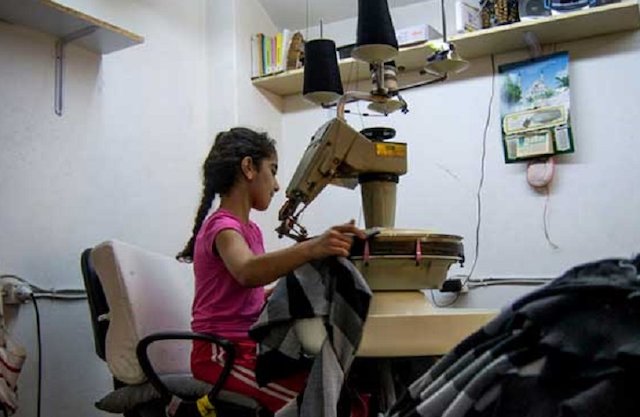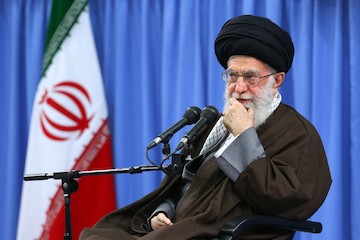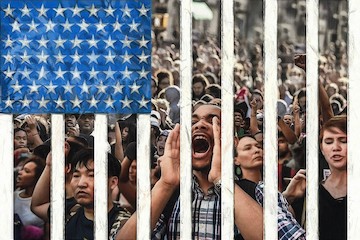In order to stop the flow of refugee immigrants to the European continent, the European Union decided to give Turkey $3.4 billion to do the job--stop Syrian immigrants in Turkey, and encourage them to stay put. Such a measure was being done by the EU as a humanitarian gesture [1]. Since the beginning of the Syrian crisis, Jordan also received aid packages for the amount of €1.85 billion each [2].
It is not unreasonable to question the basis for such an aid plan, or even the soundness of this decision, considering that large sums of money are being paid by the EU, while Europe is dealing with chronic economic problems. All European economies are currently stricken with austerity plans that have caused the collapse of many governments, and have given rise to far right sentiments, which disfavor the austerity plans so dear to the proponents of a neoliberal economy.

Let’s start with the fact that the United States and the European Union started to sign free trade agreements with Turkey and Jordan at almost the same time in 2006. A free trade agreement makes the transfer of goods, services, and labor free of custom duties between the parties of the contract. But the fact is that the bigger economy is the winner with these kinds of agreements, because it has the greater means of production. In this case, the means of production are in the hands of big European and American companies. Under these free trade agreements, these companies gain a strong foothold on the other side of the contract, who are majorly poor or developing nations. American and EU companies start to reap the benefits off a cheap workforce for 12 hour or longer workdays, provided by the host country at nearly one fourth of minimum wage in US and European countries, which are also limited to 8 hour work days by labor laws. Minimum wage in the US stands at around $1320 a month for a maximum of 40 hours of work per week. This number is higher in major European countries, and amounts to around $1700 a month for nearly the same weekly hours, while a young Syrian child who works up to 60 hours a week earns less than $200 a month[3], which is not enough for them to pay their rent.
The legal framework for the US and Europe to use the cheap labor in Jordan [4] and Turkey was already in place in 2001[5] and in 2006. It is interesting to note that in 2006, Jordan had already been accused of “gross workers’ rights violations” under a free trade agreement that they signed with the United States and Israel. Despite the widespread labor abuses that were reported, US officials at the time sufficed to say that Jordan was “very receptive” on the subject of these labor issues. Gretchen Hamel, the then-US Trade Representative spokesperson said:
“We take any allegations of violations of labor rights by our trading partners very seriously”[6].

Photograph: Frederik Johannisson
The Jordanian government, without the slightest expression of denial, regarding the existence of these abuses in Jordan, made it clear that it was taking measures to address the problem. While these remarks were made in 2006, these abuses continue to this da, and have become even more common as a result of the increased American and EU demand for the products made via slavery in Jordan. As a result, apparel manufacturing in Jordan experienced a staggering boost, which was the direct result of the free trade agreement with the United States [7] and Europe.
Among the brands that started to work with Jordanian factories, which hold their workers in dismal conditions, Target and Walmart are two of the biggest ones, even though there have been many reports indicating abusive behavior toward the immigrants who worked in Jordan. Before their arrival in Jordan, they were promised a job with $1000 to $3000 a month, but upon their arrival their passports were seized by the factory owner, rending them basically trapped, unable to move freely in the city or return to their home country as they were devoid of any ID card. From that moment, these immigrants--mainly from Bangladesh and China—have been forced to work 20 hours a day, while their meager salaries are often postponed for several months. They are beaten by their supervisors, and even jailed in the event that they complain. Despite all these abuses, Europe has taken a further step to sign a new trade deal specially tailored to use the 200,000 Syrian refugees in Jordan. Jordan also received hundreds of millions of dollars in grants and cheap loans [8].
In Turkey, the other contracting party, the same situation was also prevalent as Turkey had already signed a customs union treaty with the European Union. A customs union treaty is a sort of free trade agreement that cancels custom tax on certain products, in this case, products from the apparel industry.
It is against this background that we should analyze the refugee crisis and Europe’s aid to Turkey and Jordan. These two countries are now home to a majority of the Syrian refugees, who are suffering abuse from their supervisors. Turkey holds around 250,000 Syrian refugees, who are without a work permit, so they are forced to work in the unofficial economy of this country. A report recently published by Human Rights Watch claims that child labor is “rampant” in Turkey. This so-called unofficial economy is dominated by medium-sized factories and smaller workshops that work for European and American brands.
Not surprisingly, Syrian child refugees work under heavy exploitations in Turkey, and are in poor working conditions, with no auditing on the outsourced work from larger companies coming from the US and Europe. Turkey is the third largest supplier of clothing to Europe [9].
The Guardian makes it clear:
“In Istanbul, the white jumpers that Shukri [a Syrian child] is packing in boxes will be sent to Italy. Shukri shows me the brand stitched in the neck: Piazza Italia. The business that owns this workshop both sells to the Turkish market and exports to Germany and Italy, the supervisor says. Italian clothing company Piazza Italia did not respond to the Guardian’s request for comment.”[10]
Hundreds of thousands of Syrian adults in Turkey work for as little as $446 a month [11]. It is estimated that between 250,000 to 400,000 Syrian refugees are being exploited illegally by American and European companies in Turkey, helping to make Turkey the third major supplier of clothing to Europe, after China and Bangladesh [12].
These reports came just after 10,000 unaccompanied children were reported to be in the hands of sex traffickers. According to Europol chief of staff Brian Donald, 5,000 children had disappeared in Italy, while 1,000 were lost in Sweden. He also confirmed that a “criminal infrastructure” was now seeking to abuse child refugees [13].
What is totally evident in this scenario is the fact that European countries and the United States are pursuing their past tradition of slavery in a new form: by using a work force not directly on their soil, but in the countries with which they form alliance. In this case, the pattern of free trade agreements with Turkey and Jordan exactly match the ongoing abuses made from the Syrian refugee population. This created a dual benefit for the US and the EU, as they contain migrant flow and exploit these people in another country. All the aid provided to these countries were in form of blackmail, so that the allied countries would then provide the demanded services.
[1] EU offers Turkey $3.4bn and visas to stop refugee flow. Aljazeera. [Online] 10 16, 2015. [Cited: 02 10, 2016.] http://www.aljazeera.com/news/2015/10/eu-seeks-turkey-stem-flow-refugees-151015172702068.html.
[2] EU SUPPORT TO LEBANON AND JORDAN SINCE THE ONSET OF SYRIA CRISIS. European Commission. [Online] [Cited: 02 10, 2016.] http://ec.europa.eu/dgs/home-affairs/what-we-do/policies/european-agenda-migration/background-information/docs/eu_support_to_lebanon_and_jordan_since_the_onset_of_syria_crisis_en.pdf.
[3] Lendman, Stephen. Turkey Exploiting Syrian Refugee Adults and Children in Cheap Labour Industrial Sweatshops. Global Research. [Online] 02 02, 2016. [Cited: 02 10, 2016.] http://www.globalresearch.ca/turkey-exploiting-syrian-refugee-adults-and-children-in-cheap-labour-industrial-sweatshops/5505207.
[4] Jordan Free Trade Agreement. Office of United States Trade Representitive. [Online] 2009. [Cited: 02 10, 2016.] https://ustr.gov/trade-agreements/free-trade-agreements/jordan-fta.
[5] Greenhouse, Steven and Barbaro, Michael. An Ugly Side of Free Trade: Sweatshops in Jordan. New York Times. [Online] 05 03, 2006. [Cited: 02 10, 2016.] http://www.nytimes.com/2006/05/03/business/worldbusiness/03clothing.html?pagewanted=all&_r=0.
[6] Mekay, Emad. LABOUR: U.S. Union, Business Group Slam Jordan Sweatshops. Inter Press Service News agency. [Online] 09 27, 2006. [Cited: 02 10, 2016.] http://www.ipsnews.net/2006/09/labour-us-union-business-group-slam-jordan-sweatshops/.
[7] Op cit. Greenhouse, Steven; Barbaro, Michael (2016). [Online] Available at:http://www.nytimes.com/2006/05/03/business/worldbusiness/03clothing.html?pagewanted=all&_r=0.
[8] Laub, Karin and Malkawi, Khetam. Jordan test ground for large jobs program for Syria refugees . Associated Press. [Online] 03 04, 2016. [Cited: 03 04, 2016.] http://bigstory.ap.org/article/0e8f02667231444d840efecb2588fe03/jordan-test-ground-large-jobs-program-syria-refugees.
[9] s.l. : Eurotex, 2014. Available at:http://euratex.eu/fileadmin/user_upload/documents/key_data/fact_and_figures_2014.pdf.
[10] Johannisson, Frederik. Hidden child labour: how Syrian refugees in Turkey are supplying Europe with fast fashion. The Guardian. [Online] 02 29, 2016. [Cited: 02 10, 2016.] http://www.theguardian.com/sustainable-business/2016/jan/29/hidden-child-labour-syrian-refugees-turkey-supplying-europe-fast-fashion.
[11] Pitel, Laura. Syrian refugee children found working in Next and H&M factories. Independent. [Online] 02 01, 2016. [Cited: 02 10, 2016.] http://www.independent.co.uk/news/world/middle-east/syrian-children-found-working-for-uk-clothing-suppliers-including-next-and-hm-a6845431.html.
[12] Mønsted, Mette and Walji, Parveen. A Demographic Analysis of East Africa: A Sociological Interpretation. s.l. : Nordic Africa Institute , 1978. Available at:https://books.google.com/books?id=FFAVkGozYoYC&pg=PA15&lpg.
[13] Townsend, Mark. 10,000 refugee children are missing, says Europol. The Guardian. [Online] 01 30, 2016. [Cited: 02 10, 2016.] www.theguardian.com/world/2016/jan/30/fears-for-missing-child-refugees.




Comment